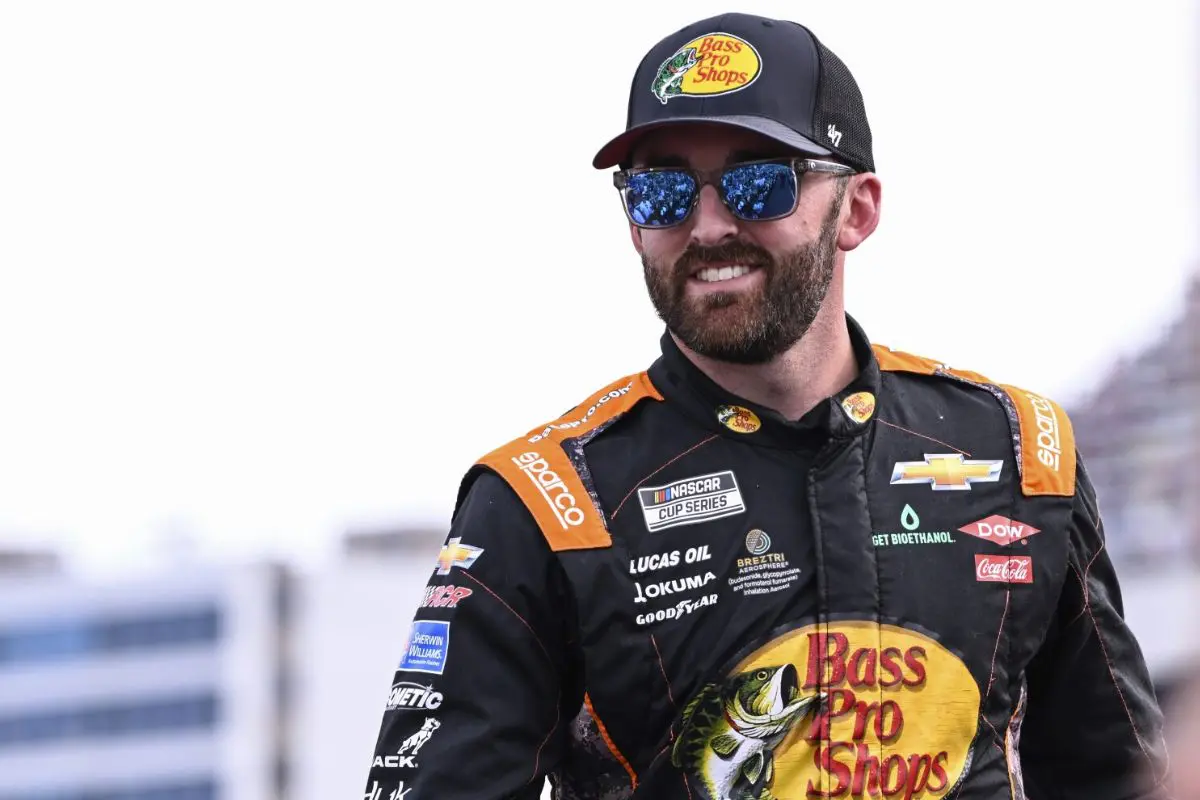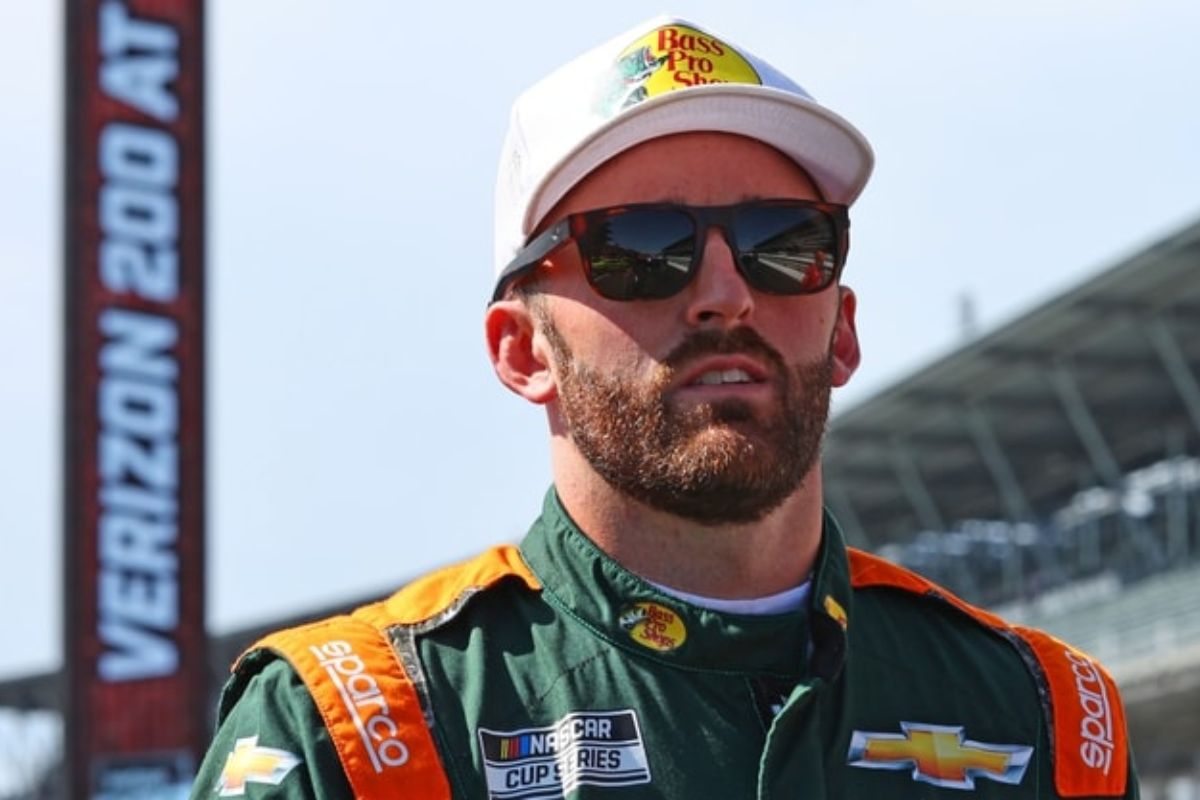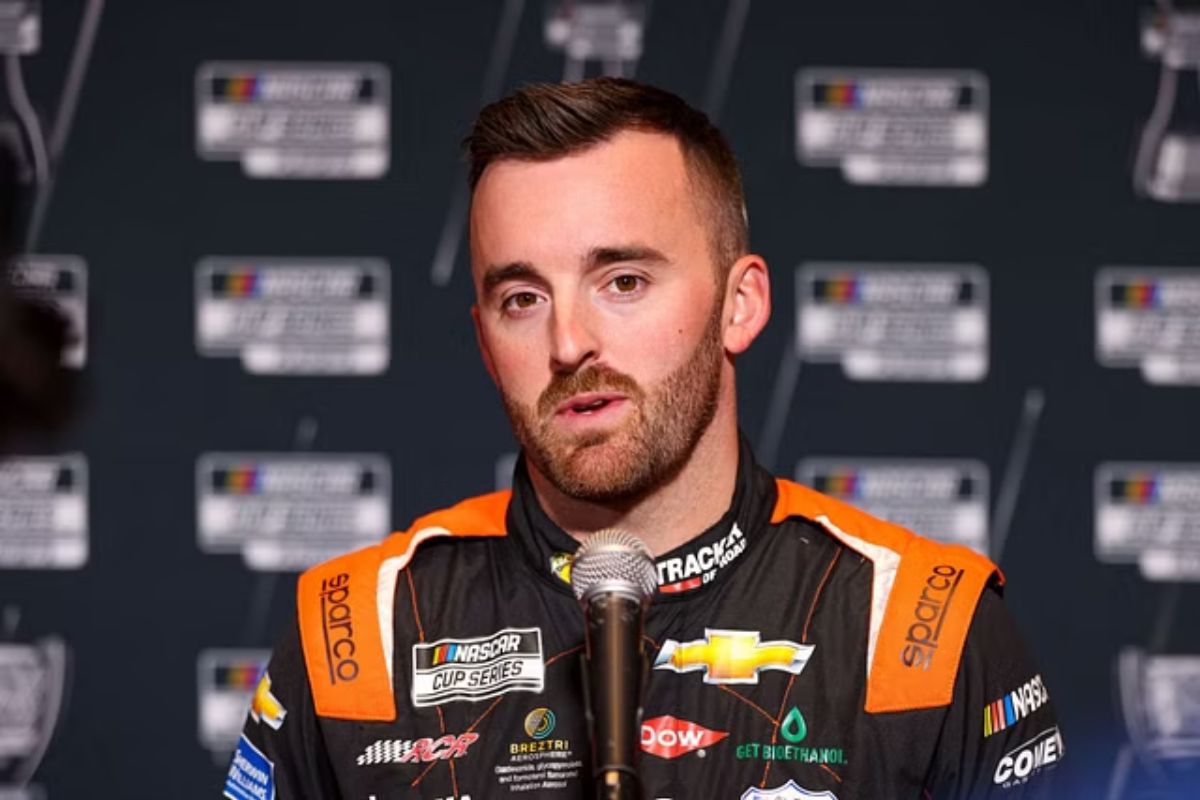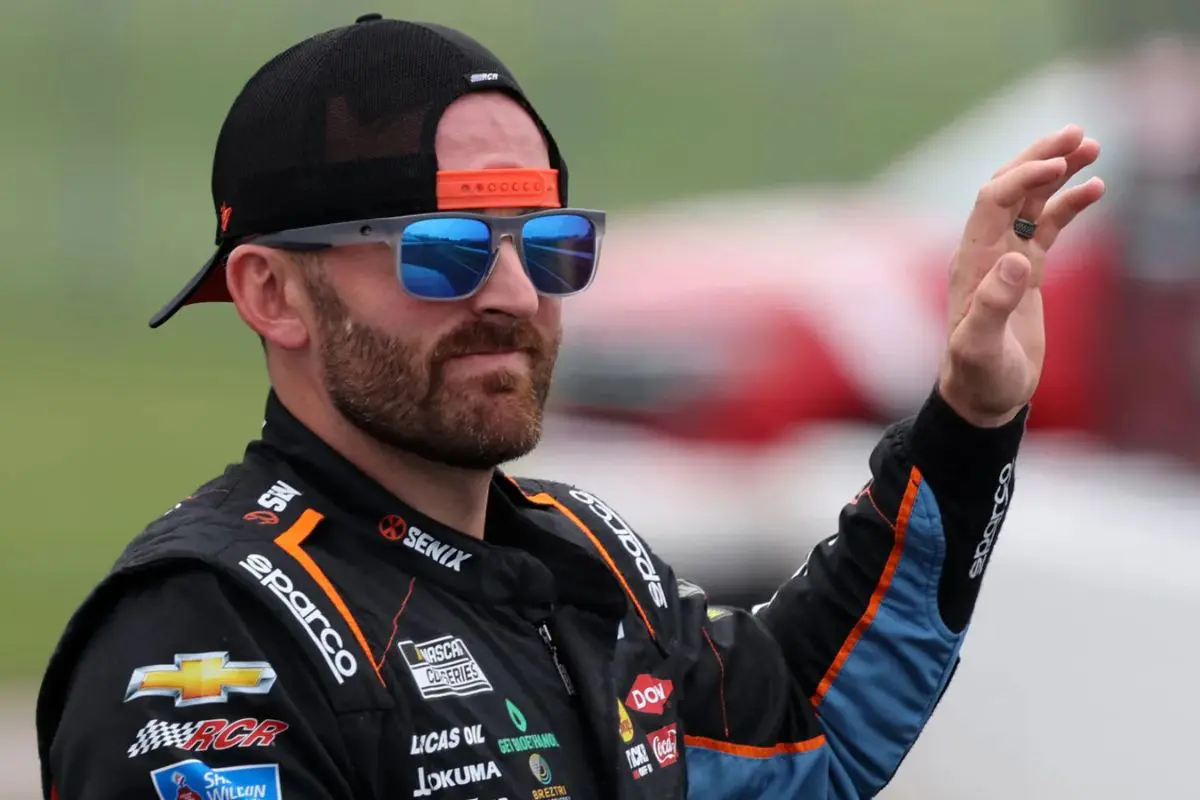Austin Dillon’s Penalty Battle: Austin Dillon‘s recent penalty battle has ignited a critical examination of NASCAR’s decision-making processes and the apparent disparities in rule enforcement that may favor powerhouse teams such as Hendrick Motorsports. The implications of the ruling not only sidelined Dillon from playoff contention but also raised pertinent questions about competitive equity within the sport. As Richard Childress voiced concerns regarding the financial and emotional toll of these decisions, one must consider whether NASCAR’s regulatory framework is inadvertently skewed to benefit those with greater resources. What ramifications might this hold for the future of competitive integrity in racing?
Key Highlights
- Austin Dillon’s penalty raises concerns about NASCAR’s inconsistent rule enforcement, potentially favoring larger teams like Hendrick Motorsports.
- The ruling’s financial impact on Richard Childress Racing may hinder their competitive capabilities compared to better-funded teams.
- Dillon’s criticism of NASCAR’s double standards highlights perceived favoritism towards certain teams, specifically regarding unpunished incidents involving Hendrick Motorsports drivers.
- The penalty disrupts Richard Childress Racing’s playoff aspirations, potentially benefiting teams with more resources, like Hendrick Motorsports.
- The ambiguity in NASCAR’s regulations may allow more prominent teams to exploit loopholes, affecting overall competitive balance.
Appeals Panel Decision and Impact
In the wake of the appeals panel’s decision, the impact on Austin Dillon’s season and Richard Childress Racing (RCR) has been profound. The ruling to uphold the penalty effectively eliminated Dillon from playoff contention, a setback that reverberates through the RCR organization. This outcome not only disrupts Dillon’s path but also raises questions regarding the team’s tactical approach moving forward. The unsuccessful appeal was anticipated, given the prevailing pressure on NASCAR to enforce disciplinary measures, especially in an environment where other teams are closely scrutinizing each decision.
The consequences extend beyond the immediate loss of playoff eligibility. Dillon’s penalty has implications for team morale and sponsorship dynamics. With RCR’s flagship driver sidelined from the playoffs, the team may face challenges in attracting and retaining sponsors who seek visibility during the postseason.
Additionally, the decision casts a shadow over the team’s performance metrics and future investments in technology and personnel, as the focus shifts to rebuilding rather than competing at the highest level.
Moreover, the ruling highlights a growing tension within the NASCAR community, particularly as smaller teams like RCR navigate the complexities of competing against powerhouse organizations such as Hendrick Motorsports. The perception that the appeals process favors larger entities could exacerbate existing rivalries and foster a climate of discontent.
Dillon’s Justifications and Criticisms
While Austin Dillon grapples with the consequences of his penalty, he has sought to articulate justifications for his actions during the Richmond race, positioning himself against perceived inconsistencies in NASCAR’s disciplinary approach. Dillon’s arguments hinge on a detailed analysis of the incidents that led to his penalty, specifically his interactions with Denny Hamlin and Joey Logano.
“The 11 [Denny Hamlin] had 45 degrees of steer angle to the right coming up the track sliding into me. So there was two parts to that wreck.” – Hamlin
Dillon contends that the wreck involving Hamlin was not solely his fault, highlighting the latter’s aggressive maneuvering. He asserts that this incident was exacerbated by Hamlin’s spotter’s calls, which he claims misrepresented the situation.
In addition, Dillon argues that his conflict with Logano did not warrant any punitive measures, citing discrepancies in their respective distances during the race.
“Second, between Joey and I, he gets out of the car afterwards and says I was four or five car lengths back. The true distance was two car lengths from NASCAR. We superimposed SMT and pictures, it was one and three-quarters car lengths back. He was three miles an hour slower on entry on his final lap than his white flag lap. That’s the reason I was able to get to his back bumper. In any case, when you get all this together, there was two parts to ever part of it. So it was frustrating.” – Dillon
Talked to Austin Dillon and I messed up my video settings. Some of what he said: pic.twitter.com/pD7VpM3j5S
— Bob Pockrass (@bobpockrass) August 31, 2024
To strengthen his case, Dillon recalled previous incidents involving Hendrick Motorsports drivers, suggesting a double standard in NASCAR’s enforcement of discipline:
- Chase Elliott’s collision with Hamlin: A similar incident that went unpunished.
- William Byron’s financial penalty: Highlighting inconsistencies in point deductions.
- NASCAR’s reliance on context: Suggesting that context should apply universally, not selectively.
- The impact on playoff berths: Questioning the fairness of decisions affecting drivers’ championship aspirations.
His criticisms not only reflect his frustration but also ignite broader discussions about equity in racing governance, emphasizing the need for a consistent application of rules across the board.
Here's a look at what happened between @WilliamByron and @dennyhamlin. #NASCARPlayoffs pic.twitter.com/UgPH2EIiNd
— NASCAR (@NASCAR) September 26, 2022
Richard Childress’s Financial and Emotional Response
Reeling from the financial implications of Austin Dillon’s upheld penalty, Richard Childress has expressed profound disappointment, highlighting the substantial impact on both his team’s budget and competitive standing. The ruling, deemed the largest fine in NASCAR history, has cost Richard Childress Racing (RCR) an estimated million dollars, a figure that emphasizes the notable ramifications of not qualifying for the playoffs.
Childress articulated his frustration during an interview, emphasizing that the upheld penalty has fundamentally altered the landscape of racing, particularly on the final lap. He lamented not only the financial toll but also the broader implications for driver behavior and strategy. Dillon’s victory at Richmond Raceway could have revitalized RCR’s aspirations, yet the penalty has effectively diminished their playoff hopes, further compounded by Kyle Busch’s struggles throughout the season.
“Their ruling has changed NASCAR racing on the final lap forever. It’s over a million dollars to us. The largest fine ever in NASCAR. I’m just disappointed, disappointed, disappointed. That’s all I can say.” – Childress
Childress’s emotional response reflects a deep-seated concern for the integrity of the sport. He criticized the ambiguity of the rules, suggesting that drivers may not fully understand the boundaries of acceptable racing maneuvers. This uncertainty could lead to inconsistent enforcement and diminished competitive spirit, which Childress believes are crucial to NASCAR’s appeal.
“The drivers now, they know where a line is, or they think they do. They don’t. If you go in a car length – two-and-three-quarters was exactly how far back he was [of Logano], and the other car slows down 3 miles an hour on the last lap, you’re going to bump in a little to get [him] up the race track. Is that over now?” – Childress
Despite the dire circumstances, Childress remains resilient, acknowledging that opportunities still exist for Dillon and Busch to turn their seasons around at upcoming races.
However, the overshadowing sentiment remains one of disappointment, rooted in the belief that NASCAR’s decision has not only affected RCR financially but has also altered the essence of racing itself.
Childress’s Concerns on Racing Rules
The ambiguity surrounding NASCAR’s racing rules has become a notable concern for Richard Childress, as he grapples with the implications of recent penalties on both strategy and driver behavior. His reflections on the controversial wreck involving Denny Hamlin underscore a pervasive uncertainty within the sport.
Childress questions the threshold for acceptable racing conduct, stating, “What is the line?” This uncertainty not only affects individual drivers but also reshapes the competitive landscape, particularly as teams vie for coveted postseason positions.
“What is the line? And then if you go to racing somebody off the corner and they get loose [as Hamlin did] and get into you, then does that mean you’re out of the Chase? That’s all I got to say about the ruling. But it has changed racing for a win for sure.” – Childress
As Childress navigates this complex terrain, several key concerns emerge:
- Inconsistent Rulings: The variability in penalties can lead to confusion and mistrust among teams.
- Impact on Strategy: Teams may alter their racing tactics in fear of penalties, hindering the essence of competitive racing.
- Driver Accountability: Ambiguous standards complicate how drivers are held accountable for their actions on the track.
- Long-term Effects: Decisions made today could fundamentally alter the dynamics of future races, affecting team morale and performance.
As the sport evolves, the need for clarity in regulations becomes paramount, prompting questions about the integrity of competition. Ultimately, these concerns highlight the urgent necessity for a cohesive framework that fosters both excitement and fairness in NASCAR racing.
The Impact of the Ruling on the Team and Season
Austin Dillon’s recent penalty has reverberated throughout Richard Childress Racing, casting a shadow over both the team’s immediate prospects and the broader competitive landscape of the season. The ramifications are profound, as Dillon’s actions not only disrupted the race but also effectively denied two competitors a legitimate chance at victory. This incident raises pressing questions about the integrity of competition and the effectiveness of race regulations, which Richard Childress himself appears to struggle to comprehend.
The immediate impact on Richard Childress Racing is noteworthy. A penalty of this nature disrupts not only the rhythm of the team but also the morale of the entire organization. The loss of points translates into diminished playoff aspirations, while also complicating the team’s tactical approach in subsequent races.
Dillon’s position as a key driver means that his performance directly affects the team’s standings and sponsors’ confidence, thereby influencing future investments and partnerships.
Moreover, the ruling has broader implications for the NASCAR season. It highlights the fine line between competitive tactics and rule violations, calling into question whether the current regulatory framework adequately addresses such scenarios. The decision may inadvertently favor teams like Hendrick Motorsports, who could capitalize on the ensuing chaos, further skewing competitive balance.
News in Brief: Austin Dillon’s Penalty Battle
The penalty imposed on Austin Dillon raises critical concerns regarding NASCAR’s regulatory consistency and the influence of financial resources on competitive balance. The disparity in enforcement between teams suggests a potential bias that may favor larger operations like Hendrick Motorsports. This situation not only jeopardizes the integrity of the sport but also undermines the principles of fair competition. Addressing these inconsistencies is crucial for maintaining trust and equity within NASCAR’s competitive framework.
ALSO READ: Austin Dillon’s Final Appeal Rejected: Playoff Hopes Rest on Darlington Duel




